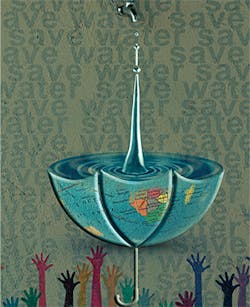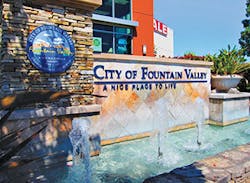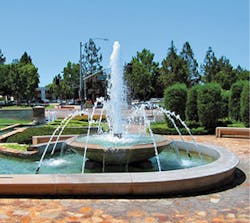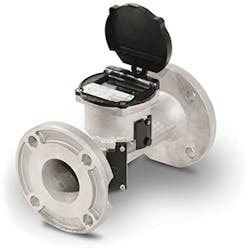Mni wiconi is Lakota for “water is life.” The phrase articulates a fundamental truth. Our lives depend on water. Planning to meet and manage demand is essential.
Demand for water has risen relentlessly over the years as the world’s population climbs past the 7 billion mark, with projections of continued growth. Lifestyle affects demand as climate change affects supply.
While demand is easily understood, responding to it involves a complicated set of choices. It can be met with a supply-side response—developing new resources—or a demand-side response—management by influencing demand and water use through more efficient use of water that is already available in order to meet objectives such as economic efficiency, environmental protection, sustainability, or other reasons that could include social equity.
Increasing efficiency through curbing inessential usage and reductions eases the burden on supply. According to The Water Encyclopedia, any activity, practice, technological device, law, or policy that can potentially reduce water use can be considered a demand management measure. The benefits of demand management can be measured in terms of avoided costs, or the incremental savings associated with not having to produce additional units of water or water service.
As explained by Benedykt Dziegielewski, professor of Water Resources at the Department of Geography, Southern Illinois University at Carbondale and executive director of the International Water Resources Association, demand management is the “purposeful and beneficial manipulation of the level and timing of water usage,” which evolved in the context of least-cost or integrated resource planning, balancing supply and demand by implementing measures to promote the efficient use of water, including load management and reduction, or conservation.
Demand management relies on strategies that influence demand to achieve equitable and sustainable use of this finite resource. These methods include: irrigation, rainwater harvesting, governmental restrictions, rate increases, and cultural changes.
Examples of technologies and efficient practices that can be employed to reduce water use are numerous. For domestic use: low-flow showerheads, shower flow restrictors, toilet tank inserts, faucet aerators, low- and ultra-low flush toilets, dual-flush toilets, insulation of hot water pipes, horizontal axis washing machines, low-pressure supply connections, pressure-reducing valves, water-efficient landscape designs, efficient landscape irrigation practices, and other devices.
For industrial use: counter-flow washing and rinse systems, reuse of process water, recirculation of cooling water, ozone treatment for cooling towers, treatment and reuse of blowdown, and water recycling. For agricultural irrigation: micro-spray and drip irrigation systems, soil-moisture sensors, laser-assisted field leveling, and evapotranspiration-driven irrigation schedules. For all other uses: metering of water, rehabilitation of water delivery systems, leak detection and repair, pressure reduction in distribution systems, conservation-oriented pricing, water-fixture plumbing standards and retrofitting, water-efficient landscaping, changes in water-use practices, and public education.
Passive approaches include the distribution of educational materials and low-cost conservation devices (such as leak detection tablets and faucet aerators). More active methods include water audits and rebates to households that purchase replacement fixtures such as toilets. An even more active approach is for the water utility to directly perform onsite retrofits.
LOSING IT
Water demand management has been called a system of techniques, consisting of five components: reducing the quantity or quality of water required to accomplish a specific task; adjusting the nature of the task so it can be accomplished with less water or lower quality water; reducing losses in movement from source through use to disposal; shifting time of use to off-peak periods; and increasing the ability of the system to operate during droughts.
There are several incentives for implementing a management plan: resource protection; increased production, which leads to efficient use rather than investment in additional sources of supply; and water loss reduction, which promotes sustainability.
Fountain Valley is dedicated to improving the quality of life for its 55,000 citizens.
But it all begins with the old adage: you cannot manage what you do not measure. “The key is demand,” says Dan Pinney, director of AMI development for Sensus. “You have to know the situation in the first place; if you’re getting information monthly, you have no idea about how to handle situations.”
He believes that in order to adequately understand where and when demand occurs, hourly data, or better, is necessary. “It’s not just knowing volume,” says Travis Smith, director of water strategies. “It’s knowing flow rate and pressure at significant resolution. That will tell you if demand is causing issues elsewhere, because you’ll see dropping pressure or service level.”
Plotting this information over time allows water managers to determine if the demand is seasonal or occurs regularly. “Knowing when peak will occur is helpful,” states Pinney.
AMI systems capture data such as flow patterns that help build a picture of where the water is going, whether consumed or dispensed through leakage. “One way to manage infrastructure and sustainability is by detecting loss,” indicates Smith. “If you detect, repair, and prevent leaks in the lines and mains, spills, and overflows, you reduce the amount of water produced and have excess storage.”
The biggest difference between the electricity and water domains, Pinney envisions, is that all water utilities have storage.
The city decided to turn off its iconic fountain to save water and set a good example for residents.
But, while the water world does have storage, if demand exceeds capacity, storage is diminished. Minimizing loss can help. “If you’re able to find real loss and repair chronic leaks, you reduce the amount of product required, and reduce withdrawl from resources,” says Smith, explaining that he means real loss, such as leakage, not water that is consumed in apparent loss—such as inaccurate accounting, unauthorized use, and meter or billing inaccuracies. “Those don’t change the demand; they only cost cities revenue loss—and they don’t fix storage capacity.”
Water loss control means that utilities audit their supply and implement controls to minimize system losses. “AMI is critical for measuring use and minimizing loss,” says Greg Land of Master Meter. The benefit, he says, it that it gives hourly (or better) readings that allow utilities to see when the customer is using water so they can track consumption . . . and waste. The company’s Allegro model has the ability to provide readings in intervals as low as 15 minutes, and the Octave, Master Meter’s commercial ultrasonic meter, gives precise measurements within a fraction of a gallon. “It picks up tiny leaks and helps find apparent loss.”
MEASURE TO MANAGE
“Supply can come from a variety of areas,” says Smith. “Knowing rainfall is helpful. AMI data, when combined with weather data and usage patterns, allows planning to use reservoirs better.”
That can be particularly critical in expanding urban areas. “Demand is an issue in relativity to scarcity,” continues Smith. “In less populated areas with rainfall, it’s not an issue. But places like Texas and California have growing populations and less supply—demand planning is more imperative.”
But, he cautions, public supply is only one piece of the puzzle. Don’t discount agriculture, industry, and commercial uses. According to Smith, commercial and industrial have the highest influence on peak demand, accounting for 35 to 55% of typical distribution system output.
Supply is limited in drought-stricken regions of the western US. When the city of Fountain Valley, CA, wanted to comply with a state initiative to reduce water usage by 500 billion gallons in response to drought conditions, Mark Sprague, utilities manager, realized the city needed a tool to determine whether residents were following the mandates, which included lawn watering on specified days.
They deployed a Sensus smart water network, including the FlexNet communication system, iPERL residential, and OMNI commercial meters. The FlexNet system is a long-range radio network that provides a scalable and reliable communications infrastructure.
“Sensus solutions helped us to monitor drought conservation regulations and exceed our goal of a 20% drop in water use,” says Sprague. “The smart water network alerts us to high volume users and allows us to work closely with those customers to find ways to use water more efficiently.”
Ultimately, they saw a 23% reduction. They continue to be able to see where water is going, which aids in leak detection.
California isn’t the only state that mandated usage reductions. Arizona and Nevada have also issued restrictions. “It puts the burden on the customer,” observes Land. “They want the customer to contribute, to make the customer accountable for the water used. Everybody becomes a water manager.”
To enable customer participation requires accurate data from accurate meters. Master Meter even offers an online portal to track billing, allowing customers to set their own thresholds and providing them with notifications of leaks.
MONITORING TRENDS
It’s not always a requirement to conserve that initiates technology upgrades. In order to reduce lost revenue due to inaccurate manually-read meters and minimize real water loss, the city of Smyrna, GA, selected Master Meter’s Bottom Load Multi-Jet Meters with 3G AMR Drive-By radios to replace their existing water meters.
“Their goal was $3.5 million in 13 years,” recalls Land. In fact, the contract guaranteed that much from increased billable water usage. The utility hoped to avoid rate increases by addressing apparent loss and leaks and still increase revenue by using meters with increased accuracy.
The multi-jet meters and AMR drive-by technology helped the utility significantly decrease water losses while simultaneously increasing revenue. By the ninth year of the contract, they had achieved a $2,606,035 increase in billable water usage—more than the amount guaranteed based on an annual average.
In the 10th year of the contract, Smyrna upgraded their existing Master Meter 3G registers to take advantage of new features, like data logging and upgraded software. The combination of new, more accurate meters and electronic reads that eliminate human error resulted in increased revenue again while reducing the number of meter readers and vehicles by 50%. In addition, the new 3G registers added functionality, including alerts for possible theft or tampering. Accurate metering allows utilities to monitor changes in consumption, which enables conservation and leak control, Land concludes.
PRICE STRUCTURE
They can do even more than that. Smart meters can assist in tracking peak hours and allow utilities to bill accordingly.
As Dziegielewski explains, demand management, or strategic load management, controls the level and timing of demand, which can improve overall efficiency of system operations and help eliminate, reduce, or defer the need for an investment in new capacity by the water utility. Reductions in peak and off-peak demand affect the total capacity requirements of the utility system and thus, the total cost of providing water service.
A well-engineered system is capable of supplying a district’s accounts, Land contends. “It should be engineered for maximum capacity, with more mains added for growth.” Nevertheless, he says, over-taxing the system could lead to additional losses through leaks or main breaks.
One advantage of AMI systems is the ability to track hourly usage, allowing utilities to charge differently if water is being used during peak hours. “Peak hours?” ponders Land. “The highest demand is 5 p.m. to 9 or 10 a.m. Our intent is not to dictate how a customer uses water, but empower utilities to implement higher rates to potentially limit the amount of water used during peak hours.”
Raising prices to encourage conservation—to manage demand—can be an attractive option for utilities. When consumers have the choice of how and when to use their water, the utility has less responsibility to police usage. However, compared with many other goods and services, changes in price generally do not induce large changes in water use. But, if consumers refuse to conserve, the utility receives increased revenue to help pay for additional infrastructure.
Some observers believe that once water prices reflect true economic value, customers will use water more efficiently. Price sends a signal about the value of water, which leads some utilities to rely on variable pricing according to the level and time of usage. Although prices are not intended to discourage water use, they do aim to promote using the right quantity of water. Increasing-block rates where unit rates are increased at higher levels of usage, seasonal and peak rates, and excess-use rates where unit rates are higher for usage above a specified level are examples of effective rate designs oriented for efficiency.
However, according to blogger Casey Wichman, there are consequences to raising prices. “Municipal water utilities in the United States often are regulated by utility commissions that make even annual rate increases a several-months-long process,” he writes in “Effective Water Demand Management: Prices vs. Restrictions.” There may be sufficient political or community resistance to price increases.
In a paper Wichman wrote, he examines the effects of price and non-price policies for reducing household water use during the 2007 drought in North Carolina, one of the most severe in the state’s history. Examining data for more than 1,700 households across the state, he compared responses to price changes and to voluntary and mandatory watering restrictions. He found that lower-income households were most sensitive to changes in price, while households with in-ground irrigation systems didn’t respond to price increases.
Nonresidential water use and outdoor residential water use (such as summer lawn watering) are generally more responsive to price than indoor residential water use.
Voluntary restrictions accounted for an 8% reduction across the board, regardless of income level. Mandatory restrictions that could result in penalties netted a 13% decrease across all income levels, with households with irrigation systems and high consumption patterns reducing by more than 20%.
The disparity is significant. The bottom 20% of earners spend almost 3% of their after-tax income on water, which is nearly five times the amount spent by the top 20% of earners. This makes these users vulnerable to service disconnections.
DROUGHT MANAGEMENT
Although demand management should not be equated with drought management, Dziegielewski says water utilities implement efficiency practices that can be beneficial during periods of water shortage. “Some of the basic demand management techniques can be accelerated during supply emergencies or droughts.”
Round Rock, TX, survived several years of drought, but once it was behind them, residents resumed their pre-drought water usage patterns. Not only did the utility struggle with over-use, but many of the 33,000 homes and businesses began to complain about the size of their water bills. With major growth projected to more than double the city’s population in the near future, the utility knew something had to be done.
They chose Master Meter’s Allegro Under-the-Glass AMI Integrated Endpoint Register to mitigate the adverse effects of flooded pits. Their old meters had issues caused by the harsh conditions in water pits, but the new meters adapt to changes in the pit environment while maintaining a consistent and reliable connection with a central data collector.
In traditional systems, a flooded pit can cause a signal frequency shift of 5 or 6 MHz, causing the meter to lose connection. Master Meter’s new antenna technology detects this shift in frequency and compensates for it, maintaining a consistent signal by switching between the dual-band inputs and choosing the highest and most reliable connection so it can continue to transmit data.
The meters provide reliability and accurate readings. The data they collect then flows into Master Meter’s Harmony Water Meter Data Management and Analytics Software, which provides utility managers with access to their information—as well as integration with their customer information system, GIS, enterprise billing systems, and customer relationship management software suites. The utility uses all of this information to help educate customers about how they use water and encourage them to conserve.
Master Meter’s Harmony Allegro water meter data management and analytics software
BALANCE
Whether facing drought conditions or not, water demand management encompasses water conservation and increased water use efficiency. This requires a major paradigm shift from conventional supply management to the management of demand. It means producing additional quantities of water for immediate needs through conservation or by increasing agricultural and industrial production per unit of water.
The American Water Works Association advocates the water audit method it developed in conjunction with the International Water Association. Measuring, estimating, and calculating allow the utility to establish a water balance.
The question is, Smith says, are you trying to solve sustainability or meet demand? “Water utilities look at four charters for missions: sustainability and equitable distribution; hydraulics—the system is designed for fire flow (pressure and volume); clean water for public health—time of storage, water age, and quality; and account management of consumer revenue, amount of consumption. They strategize around these four quadrants.”
In some cases, says Land, the problem is having enough supply to provide drinkable water. “Some utilities buy water from other utilities or watering districts, who may place upon them some sort of threshold or water budget limits; others may face drought conditions.”
Leak detection can significantly increase available water supplies. Recovering water losses and increasing efficiency are the most easily accessible sources of water. Accurate metering can assist all of these issues.
Octave, Master Meter’s ultrasonic meter
In addition, Smith says an AMI system adds value to planning and efficiency. AMI can help utilities predict demand. The basic premise of water delivery is water flowing through a pipe. “The size of the pipe is fixed; the only thing changing hourly is flow rate and pressure. If you measure pressure and usage, you can do demand planning. Flow rate and pressure are interconnected. The future of the AMI system is to correlate the connection.”
According to Steelwedge, companies that use data to identify demand can reduce forecast error by 40%. Benchmarking results show that for every 1% improvement in forecast accuracy, companies report a 1 to 2% drop in inventory levels. Companies with the right technology in place average 17 points higher forecast accuracy than the average for those without it, who achieve only 58% accuracy when relying on spreadsheets to manage demand planning. Best-in-class companies achieve 75% average forecasting accuracy.
That accuracy impacts cost, capital, and product availability, which is why Steelwedge says the trend is that companies are no longer content relying solely on statistical forecasting based on past sales and shipping history to predict future demand. Now they incorporate multiple causal variables, including segmented demographics, population growth, seasonal events, and buying patterns to gauge the potential impact to demand over the near, short-, and long-term. The ability for forecasting processes to “sense and respond” to near real-time events and take into consideration the changing patterns of consumer behavior has changed the game.
The ability to more accurately predict enables strategic planning, a key aspect of a successful demand management strategy. Identification of who is using water, when, how much, how efficiently, and for what purpose can be used to reduce water usage. Pinney says access to usage patterns allows utilities to “proactively move water around to meet demand” and draw water during off-peak hours.
The limited and costly options of developing new water resources has influenced many governments to adopt water conservation measures. Water demand management plans can include a wide range of measures such as:
- cost-reflective pricing
- universal customer metering
- leak detection
- a communication strategy, including education
- the use of incentives for installation or retrofitting of efficient equipment
- reduction of water use by the water utility
- regulation of the efficiency of appliances
- use of reclaimed water (e.g., waste water or grey water) to reduce the need for fresh water supplies
- water use restrictions, either on a temporary or permanent basis
Utilities can achieve revenue stability and reduce costs by using data-driven demand management to improve forecasting accuracy and influence water efficiency. “Like in electric, demand management is coming to the water world,” concludes Pinney.
Because all life does rely on water, it is incumbent upon us to manage the supply of this very limited and endangered commodity. Mni wiconi.
REFERENCES
www.watersmart.com
www.pacificwater.org/pages.cfm/water-services/water-demand-management/what-water-demand-management/
www.ucowr.org/files/Achieved_Journal_Issues/126_A4Strategies%20for%20Managing%20Water%20Demand.pdf
www.waterencyclopedia.com/Da-En/Demand-Management.html
www.rff.org/blog/2016/effective-water-demand-management-prices-vs-restrictions





